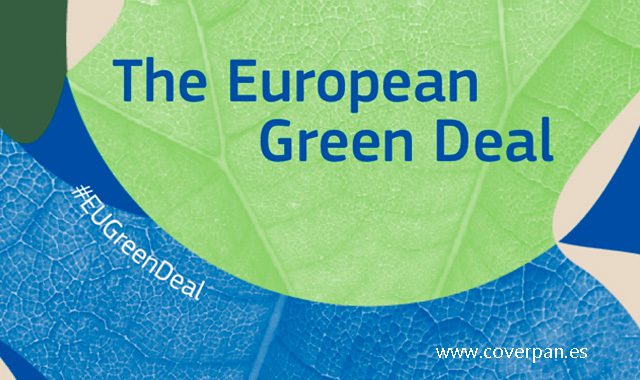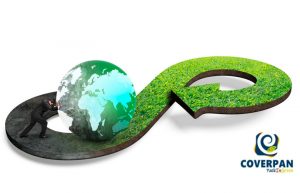The European Commission’s proposal for new EU-wide packaging rules is a crucial step towards tackling the growing problem of waste and consumer frustration.
Current context
According to the European Commission, on average each European generates almost 180 kg of packaging waste per year. Packaging is among the largest users of virgin materials, with 40% of plastics and 50% of paper used in the EU going to packaging. Without action, packaging waste in the EU would increase by a further 19% by 2030 and, in the case of plastic packaging waste, by as much as 46%.
Products need to be packaged for protection and safe transport, but packaging and its waste have a considerable impact on the environment and the use of virgin materials. The amount of packaging waste is increasing, often at a faster rate than GDP. Packaging waste in the EU has increased by more than 20% in the last ten years and is expected to increase by a further 19% by 2030, if no action is taken.
Bio-based, biodegradable and compostable plastics are appearing in our daily lives as alternatives to conventional plastics. Citizens can find them, for example, in packaging for food, consumer goods and textiles, as well as in other sectors. Because they carry the prefix “bio”, consumers have the impression that they are necessarily good for the environment. However, this is only true to a certain extent, as it is not enough for packaging to be biodegradable, what is important is that it is compostable.
The new rules are intended to put an end to this trend and to the lack of awareness that exists in society. For consumers, they will enable reusable packaging options and put an end to unnecessary packaging, limit over-packaging and provide clarity on labels to support correct recycling. For industry, they will create new business opportunities, especially for smaller companies, reduce the need for virgin materials, boost Europe’s recycling capacity and reduce its dependence on primary resources and external suppliers. They will put the packaging sector on the path to climate neutrality by 2050.
The Commission also provides clarity to consumers and industry about confusion and greenwashing with terminologies such as bio-based, compostable and biodegradable plastics by identifying the applications in which these plastics are actually environmentally beneficial and how they should be designed, disposed of and recycled.
The proposals are key pillars of the European Green Pact’s Circular Economy Action Plan and its aim to make sustainable products the norm. They also respond to concrete requests from Europeans expressed at the Future of Europe Conference.
Reducing waste, boosting re-use and composting, and making all packaging recyclable by 2030
The proposed revision of EU legislation on packaging and packaging waste has three main objectives. Firstly, to prevent the generation of packaging waste: to reduce the amount of packaging waste, to restrict unnecessary packaging and to promote reusable and refillable packaging. Secondly, to boost high quality (“closed loop”) recycling: to make all packaging on the EU market recyclable in an economically viable way by 2030. Finally, to reduce primary natural resource needs and create a well-functioning secondary raw material market by increasing the use of recycled plastics in packaging through mandatory targets.
The main objective is to reduce packaging waste by 15% by 2040, per person and per Member State, compared to 2018 figures. These measures would result in an overall decrease in waste in the EU of around 37% compared to what would happen in the absence of any change in legislation. This target will be achieved both through re-use and recycling.
To encourage reuse or refilling of packaging, which has declined sharply over the last twenty years, companies will have to offer consumers a certain percentage of their products – for example, take-away beverages and meals or e-commerce deliveries – in reusable or refillable packaging. There will also be some standardisation of packaging formats and clear labelling of reusable packaging.
To clearly tackle unnecessary packaging, certain forms of packaging will be banned, such as single-use packaging for food and drink consumed in restaurants and cafés, single-use packaging for fruit and vegetables, miniature shampoo bottles and other miniature packaging in hotels.
Many of the measures envisaged aim to make packaging fully recyclable by 2030, including setting design criteria for packaging, creating mandatory deposit and return systems for plastic bottles and aluminium cans, and clarifying which very limited types of packaging should be compostable, so that consumers can deposit them in containers intended for bio-waste.
There will also be mandatory recycled content rates that producers will have to include in new plastic packaging. This will help to turn recycled plastic into a valuable raw material, as the example of PET bottles in the context of the Single Use Plastics Directive already demonstrates.
The proposal will clear up confusion about which recycling container should be used for which type of packaging. Each packaging will be labelled indicating what it is made of and to which waste stream it belongs. Waste collection containers will have the same labels. The same symbols will be used throughout the EU.
By 2030, the proposed measures would reduce greenhouse gas emissions from packaging to 43 million tonnes, compared to 66 million tonnes without a change in legislation, a reduction equivalent to the annual emissions of Croatia. Water consumption would decrease by 1.1 million m3. The costs of environmental damage to the economy and society would be reduced by EUR 6.4 billion compared to the 2030 baseline.
The single-use packaging industries will have to invest in the transition, but the overall effects in the EU in terms of economic and job creation are positive. The promotion of reuse alone is expected to create more than 600,000 jobs in the reuse sector by 2030, many of them in small and medium-sized local businesses. Considerable innovation is expected in packaging solutions that will lead to reduction, reuse and recycling. The measures are also expected to save money: every European could save almost 100 euros a year if savings in business are passed on to consumers.
Clearing up the confusion around bio-based, biodegradable and compostable plastics
The use and production of bio-based, biodegradable and compostable plastics has been steadily increasing. A number of conditions must be met for these plastics to have positive environmental effects rather than exacerbating plastic pollution, climate change and biodiversity loss.
The Commission’s new framework clarifies how these plastics can be integrated into a sustainable future.
Biomass used to produce bio-based plastics should come from sustainable sources, should not be harmful to the environment and should respect the principle of “cascading biomass use”: producers should prioritise the use of organic waste and by-products as raw materials. Furthermore, in order to combat greenwashing and to avoid misleading consumers, producers should not make generic claims on plastic products, such as those referring to terms like “bioplastic” and “bio-based”. When communicating bio-based content, producers should indicate the exact and measurable proportion of bio-based plastic in the product (e.g. “this product contains 50% bio-based plastic”).
Biodegradable plastics need to be approached with caution. They have their place in a sustainable future, but should be targeted at specific applications where their environmental benefits and value to the circular economy are proven. Biodegradable plastics should by no means be given carte blanche to generate waste. They must also be labelled in such a way as to indicate how long they will take to degrade, under what circumstances and in what environment. Products that can be disposed of as litter, including those covered by the Single Use Plastics Directive, cannot be declared and labelled as biodegradable.
Industrially compostable plastics should only be used where they provide environmental benefits and do not adversely affect the quality of the compost, and where an appropriate bio-waste collection and treatment system is in place. They shall only be allowed for products such as tea bags, filter coffee capsules, fruit and vegetable stickers and very light plastic bags. Products shall in all cases specify that they are certified for industrial composting in accordance with EU standards.




